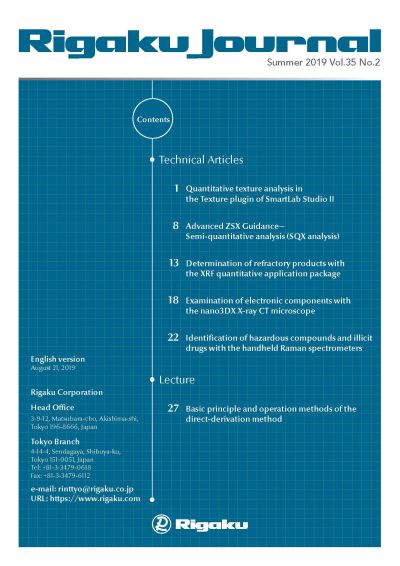X-ray computed tomography (CT) is a nondestructive imaging technique that can be used to examine the internal features of an object in three dimensions (3D). The first commercial X-ray CT scanner was introduced 45 years ago and the technique has been widely used in the medical and industrial fields since. Recently X-ray CT for examining microstructures of size less than 10 μm (X-ray micro-CT) has seen rapid growth in the research and development of materials. This method is mainly used in the automotive industry to analyze defects such as voids or cracks in castings and resin molded products, and in the electronics industry to evaluate bonding defects in electronic printed circuit boards (PCBs).
As the X-ray micro-CT technique has become more popular, the demand for new sample analysis applications is emerging. One of these applications is examination of micrometer-scale structures of electronic components or PCBs. Typical X-ray micro-CT systems can be used to examine such objects, but their spatial resolution is not very high (5 μm). Therefore, it has been difficult for these instruments to render the internal microstructure of those objects in detail needed for this application.
Another application is examination of engineering materials made up of only carbon-containing compounds, that is, polymers and carbon fiber reinforced polymers (CFRP), which are essential to develop lightweight parts, composite materials, etc. In order to meet such demand, we have developed the nano3DX X-ray CT microscope, combined with a chromium (Cr), copper (Cu), or molybdenum (Mo) target, each of which emits highly monochromatic, long wavelength X-rays yielding a large interaction cross section (high sensitivity) for the materials described above.
Using these X-rays, the nano3DX can examine structures nondestructively at the 1 micrometer scale, in objects such as CFRPs, pharmacological agents and chemical products, with a sensitivity one order of magnitude greater than that of conventional X-ray micro-CT systems. As the result, identifying the relationship between internal structure and material properties, which can’t be done by the cross section method (e.g., conventional optical microscope, electron microscope), is now possible.

